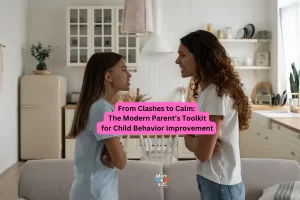 Attachment parenting became a popular buzzword in parenting theories around twenty-five years ago, when pediatrician Dr. William Sears introduced the term. Just like the name suggests, attachment parenting is a philosophy that stresses the nurturing of a healthy bond or attachment between a parent and child. This attachment will help a child to develop a higher level of security which will translate into healthier relationships throughout life, advocates of this parenting philosophy say. There are a number of steps that go into attachment parenting, and the process begins before the child is even born. There are experts who subscribe to Dr. Sears thinking and others who find his suggestions unhelpful and even harmful to the development of a child. The best advice for a parent who is considering these types of parenting techniques is to collect the necessary information to make an informed choice that is best for everyone in the family.
Attachment parenting became a popular buzzword in parenting theories around twenty-five years ago, when pediatrician Dr. William Sears introduced the term. Just like the name suggests, attachment parenting is a philosophy that stresses the nurturing of a healthy bond or attachment between a parent and child. This attachment will help a child to develop a higher level of security which will translate into healthier relationships throughout life, advocates of this parenting philosophy say. There are a number of steps that go into attachment parenting, and the process begins before the child is even born. There are experts who subscribe to Dr. Sears thinking and others who find his suggestions unhelpful and even harmful to the development of a child. The best advice for a parent who is considering these types of parenting techniques is to collect the necessary information to make an informed choice that is best for everyone in the family.
Infant Care in Attachment Parenting
There are a number of attachment parenting steps that are taken before your baby even leaves the hospital after birth. These include breastfeeding, baby wearing and shared sleep. Breastfeeding is not only encouraged by attachment parenting gurus, but by most of the medical community as well. However, experts of this school of thought advise mothers to nurse as long as she and her little one are fulfilled by the act. Those who disagree with this approach say that a working mother may need to wean her child earlier rather than later, and six to twelve months is plenty of time for a child to reap the benefits of the experience. These experts maintain that a mother should decide when the [tag-tec]breastfeeding[/tag-tec] stage is over, and gently wean her child to a bottle or cup.
Baby wearing is the act of carrying your child with you throughout the day in a sling or other mode of carrier. Attachment parenting recommends this practice, and warns against too much separation between the mother and child during the early stages of life. It is advised that mothers take their babies to work, play and socialize as much as possible. Opponents of this philosophy agree that this method may benefit high-demand [tag-ice]children[/tag-ice], but most need to learn that short separations will merely result in Mom and Dad returning every time. It is also good for parents to have time alone, away from the children, in order to nurture the marriage relationship as well.
Shared sleep may be the most controversial part of attachment [tag-cat]parenting[/tag-cat] theories. Shared sleep means that parents allow their infant to sleep in their bed with them. The idea is that a baby will feel the love of his parents throughout the night and therefore reduce the anxiety and fear of abandonment that sleeping alone might bring. If you are the parent of a little one, there is certainly an attractive quality to the vision of cuddling with your baby at night until you both fall asleep, particularly if you are still nursing and feeding your child frequently. There is also evidence that suggests that sleeping with parents is not safe for an infant, and can increase the risk of strangulation, suffocation and Sudden Infant Death Syndrome (SIDS). Attachment parenting experts offer a list of precautions to use to make this practice of shared sleep safer for your child.
Whatever your decision might be regarding attachment parenting practices, keep in mind that a parent is the best person to choose what is right and best for her child. The most important thing that a parent can do is to collect the facts about various parenting philosophies and select the approach that will work best for your individual situation and family. Even attachment parenting zealots will agree that the best parenting philosophy is the one that works the best for your own child.











1 Comment